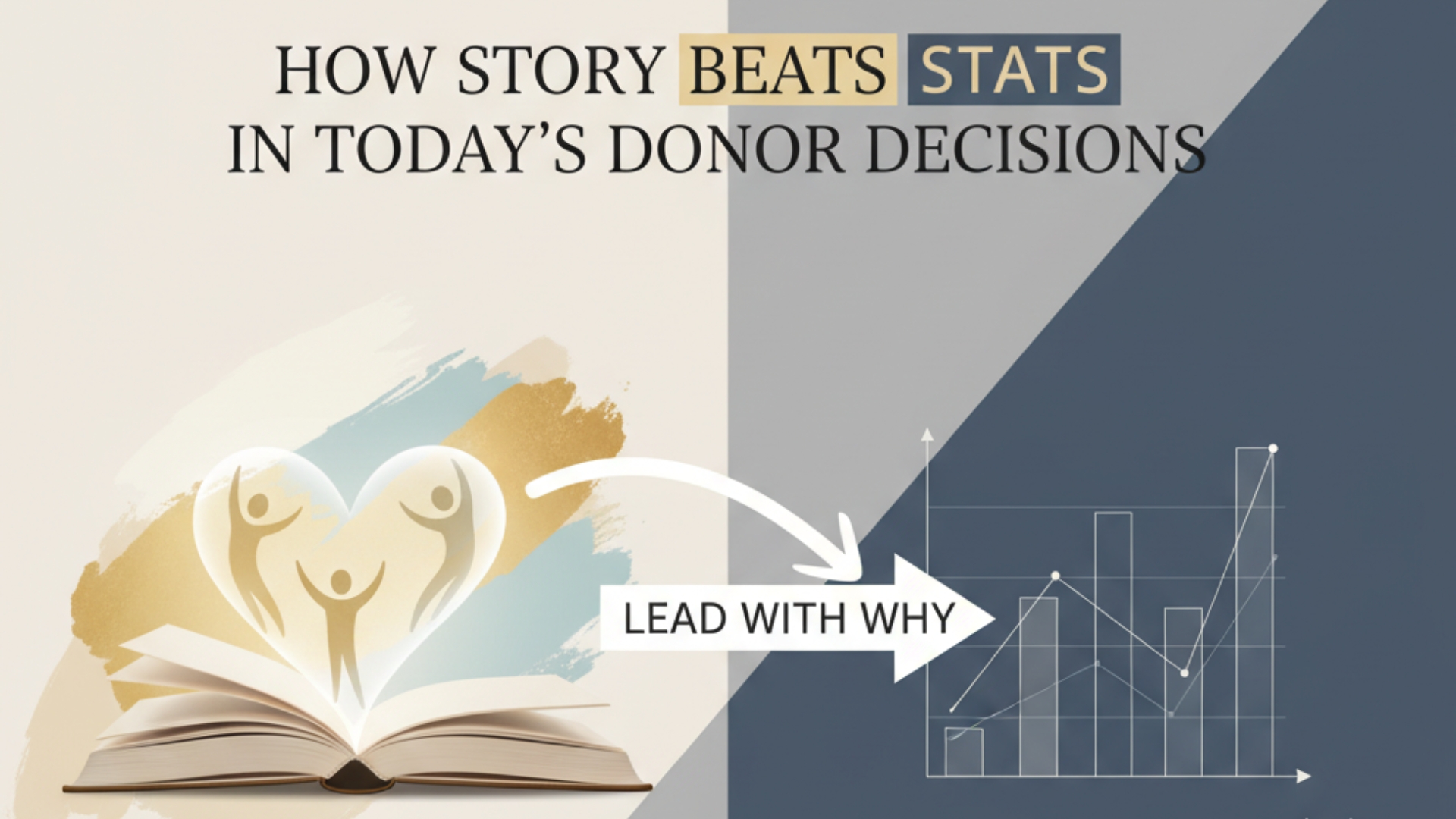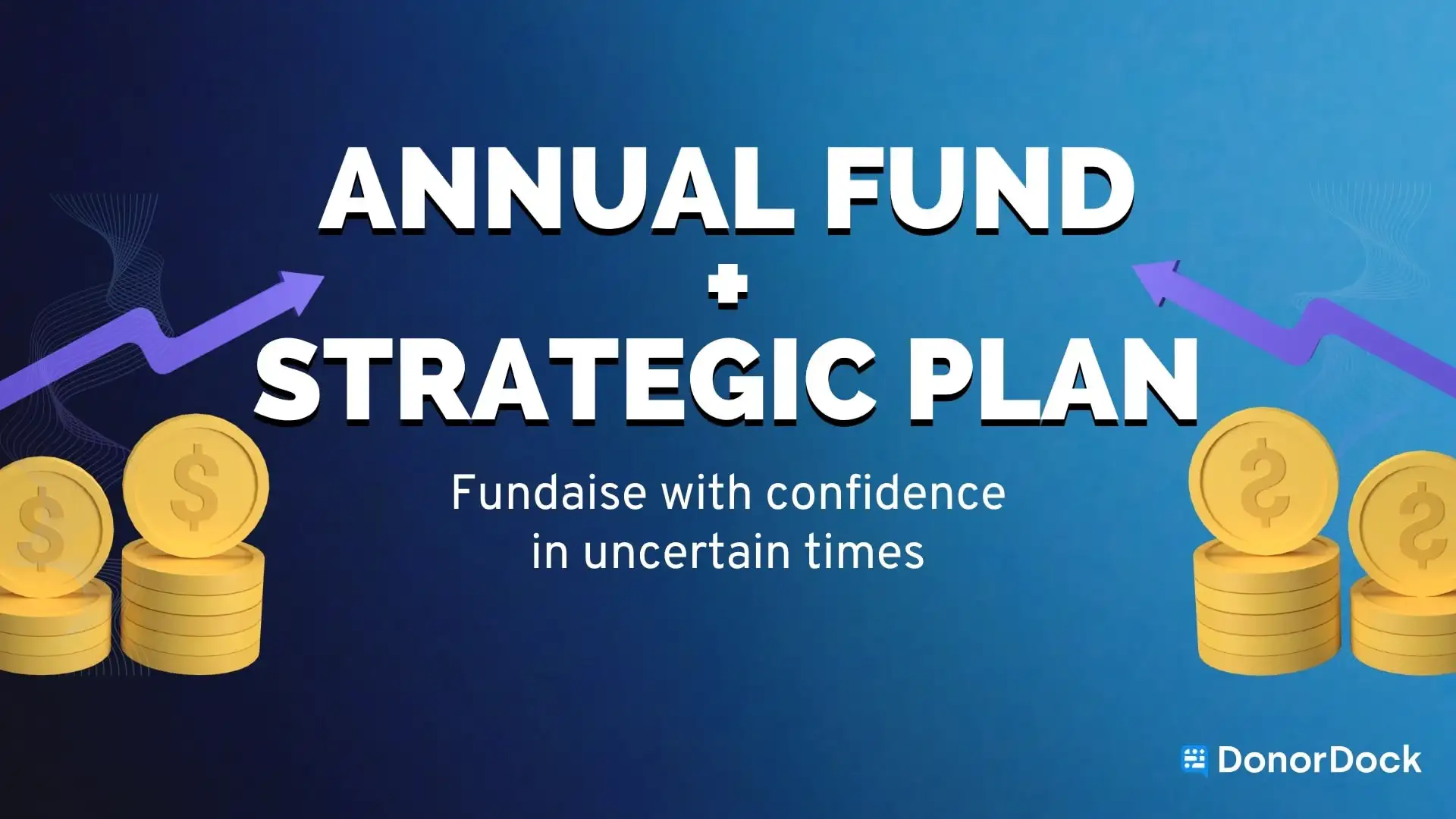A small after-school program sent two different appeals to its donor list. One started with, “Last year we served 1,482 students with 64 volunteers across 3 counties.” The other opened with, “Meet Jasmine. She’s 9, and until this year, she was coming home to an empty apartment every afternoon.” Which one do you think raised more?
Donors don’t give to numbers, they give to people. They give when a story moves them, when they feel like they can step in and play a role in someone’s transformation. Yet many nonprofit appeals still lead with stats, thinking numbers prove credibility. The truth is that your story is what inspires action, and your data is what builds trust afterward. If you flip the order–story first, stats second–you’ll connect on a deeper level and invite longer-term partnership.
Why your story matters (more than your stats)
Humans are wired to remember stories. Studies show that people remember stories up to 22 times more than facts alone (Strat Labs). That means the “2,000 meals served” line in your annual appeal may fade from memory, but the story of a dad sitting down to dinner with his kids for the first time in months sticks.
people remember stories up to 22 times more than facts alone
Donors themselves confirm this. In the 2024 StoryRaise benchmark report, 70% said they’re more likely to give to an organization that effectively uses storytelling. And those stories don’t just inspire a one-time gift. Nonprofits that consistently share narrative updates see higher retention and stronger donor loyalty over time.
That’s because stories stir emotion. Research around the “identifiable victim effect” shows that people are more willing to give when they’re presented with one face and one name, rather than statistics about many (Pride Philanthropy). A story about Maria, whose rent support kept her children safe, will almost always inspire more action than “30% of families face eviction.” Your stats still matter, but they belong later, after the donor has already felt pulled into the story.
Of course, data does play a critical role. In fact, donors today expect proof that their money is making an impact. A recent study from Yale’s Center for Customer Insights showed that trust and transparency are major decision drivers for charitable giving. But that trust only matters once a donor has already been emotionally moved to care.
Lead with story, and let your stats strengthen the credibility of the transformation you’ve described.
How to build an ask that starts with story
Too many fundraising appeals start with numbers: “We served 3,500 people last year.” Instead, flip the script.
Your most powerful appeals follow a simple rhythm: story, then ask, then proof.
Start with a character and context. Introduce someone your donor can picture, like, “Meet Teresa, a single mom in your city who’s working two jobs to keep her kids in school.” From there, show the conflict or tension she’s facing, what’s at stake if nothing changes. Maybe Teresa is one paycheck away from eviction, or her kids are at risk of dropping out.
Then comes the catalyst. This is where your donor enters the story. You might say, “With help from people like you, Teresa can keep her family safe at home.” It frames their role as the turning point. Next, paint the transformation. Describe what change looks like: “Today her children are thriving in school, and Teresa has the stability to pursue training for a new career.”
Only after the story lands do you layer in your stats. Instead of leading with numbers, use them to underscore credibility: “Your gift joins 150 others that helped reduce evictions by 30% in our community.” The story makes donors care; the numbers assure them their care is effective.
Finally, invite them to act with a clear, warm call to action: “Will you partner with us to help another family like Teresa’s write their next chapter?”
This rhythm is effective because it mirrors how humans make decisions. We feel first, then we rationalize. When your appeals honor that, you cut through the noise and focus on what matters most.
Stewarding donors through ongoing stories
A donor’s journey doesn’t end with their first gift. One of the strongest ways to keep trust and connection alive is to keep the story alive. That means sharing updates: “Here’s how Teresa’s journey is unfolding,” or, “Here’s what surprised us this quarter.” By showing progress and next steps, you turn a one-time donor into a partner in the ongoing narrative of your mission.
By showing progress and next steps, you turn a one-time donor into a partner in the ongoing narrative of your mission.
You can also invite your donors’ own voices into the story. Ask them why they give and what values they’re carrying forward. Research from Virtuous found that donors who shared their personal story of giving became more loyal and more engaged. By making space for their narrative, you reinforce that this isn’t just your story, it’s theirs too.
And don’t just report numbers back. Instead of sending a spreadsheet of outcomes, frame your impact reporting as a continuation of the story. Start with a person, a family, or a community whose life was touched, then weave in the relevant metrics. The Veritus Group notes that this kind of reporting not only conveys transparency but also makes donors feel the impact on a human level. It’s the difference between reading a quarterly report and feeling like you’re reading the next chapter in a book you care about.
Your next step: Rewrite one ask
Choose your next fundraising appeal, whether it’s an email, a letter, or a campaign page, and rewrite it with a story-first approach.
Start with one protagonist your donors can picture. Sketch the challenge or turning point they’re facing. Write your opening three sentences to lead with their journey. Then add one or two data points that validate the story. Close with an invitation that feels like partnership.
Resources
For core storytelling principles you can apply today, read Nonprofit Storytelling: Build Donor Engagement.
To shape stewardship that keeps donors connected between appeals, try The Relationship Loop: A Nonprofit Stewardship Framework.
When you need to show results without overwhelming your team, use Show Donors the Impact (Without a 20-Page Report).
And if your plan feels crowded, simplify your calendar with The 5–8 Fundraising Plays That Actually Work.













